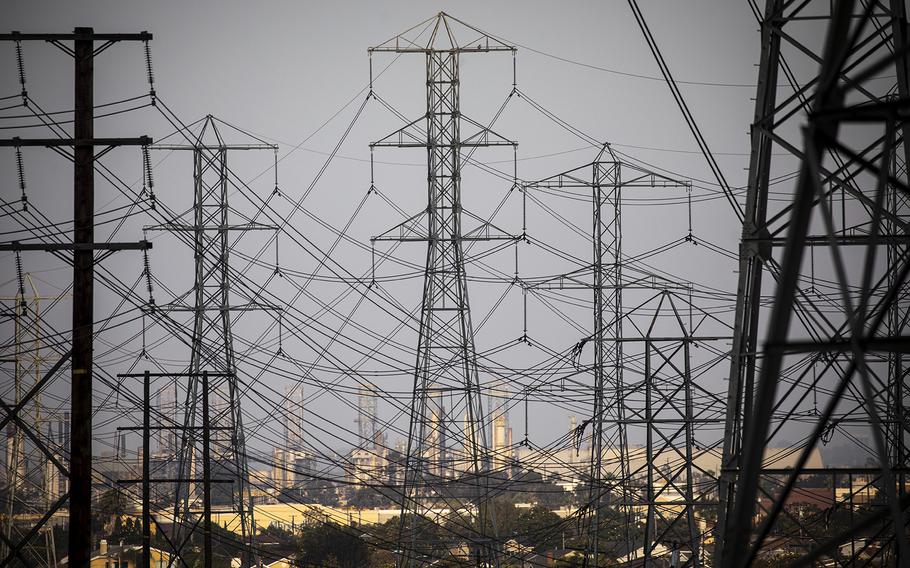
Power lines in Redondo Beach, Calif. (Jay L. Clendenin, Los Angeles Times/TNS)
The U.S. electric grid is a cornerstone of our national defense. Ninety-five percent of U.S. military bases rely on the civilian grid for power, meaning even short-term disruptions to electricity can impact a vital mission happening in real time on the other side of the world. These disruptions are not uncommon, and they can add up; in 2021, defense installations across the country suffered more than 6,000 energy disruptions, amounting to more than 3,000 days of lost power.
After 22 years of serving in the U.S. Army, I can testify that energy security is essential to securing the future of our country. While deployed in Iraq, I protected fuel supply lines on combat tours from sabotage attempts. Later, as director of the Illinois Emergency Management Agency, I led the response to floods, tornadoes, and other extreme weather impacting the grid and, by extension, the lives of the people of Illinois. Now I work with the Department of Defense to address the impacts of recent events such as Winter Storm Uri, when 12 bases in Texas lost electricity service, or Hurricane Ida in 2022, when customers in Louisiana were without power for more than three weeks, exceeding the 14-day planning horizon for backup power on military bases.
While leading the resilience program at PJM Interconnection, the world’s second largest grid operator, I saw the scale at which DOD consumes energy, and learned that the current electric grid cannot fully support national defense needs. A major factor is our current incremental approach to planning transmission — the big lines that move electricity from where it’s generated to where it’s used by customers — which is inefficient and insufficiently comprehensive. We cannot continue operating under this status quo.
Over the past two years, the rise of data centers and U.S. manufacturing facilities have resulted in an unprecedented surge in electricity demand growth, with some individual projects expected to surpass 1,000 megawatts — the amount required to power roughly 750,000 homes. Securing reliable electricity for military installations and defense communities, states, and regions will require transmission planners across the U.S. to account for expected energy demand in the U.S. to reach the highest levels in half a century, all while the grid undergoes a massive transformation in how electricity is generated and consumed.
But rising demand is not the only factor threatening reliability — our grid was not designed to withstand the ever-increasing quantity and severity of extreme weather events, from heat waves to winter storms. Since 2000, there’s been a 67% increase in major power outages from weather-related events.
When extreme weather hits, transmission is key to importing power from nearby states not impacted by the event. This ability to quickly move large quantities of electricity is the key differentiator between a rapid system recovery and the type of impact seen in Texas during Winter Storm Uri, when nearly 5 million customers lost power for up to three days. As these extreme weather events multiply in the coming years, well-planned transmission is increasingly important to ensure that power can be moved from where it’s available to where it’s needed most.
Our electric grid needs an update — one that is forward-looking and comprehensive in the face of a developing economy and changing environment. The Federal Energy Regulatory Commission, an independent agency that regulates transmission, is currently considering a regional planning and cost allocation rule that could help solve this challenge. The rule requires planners to take a long-term assessment of the changing demand and future resource mix, as well as specifying a comprehensive set of transmission benefits and a procedure for assigning costs in line with those benefits. This will require elected officials at the local, state and federal level to undergo robust transmission planning and grid expansion to support national defense needs.
Without rapid and persistent action at the national and regional scales, vulnerabilities to the systems that support our most critical needs will soon outpace our ability to address them.
Jonathon Monken served in the U.S. Army for 22 years. He is a former senior director of the PJM Interconnection and currently a principal at Converge Strategies LLC.